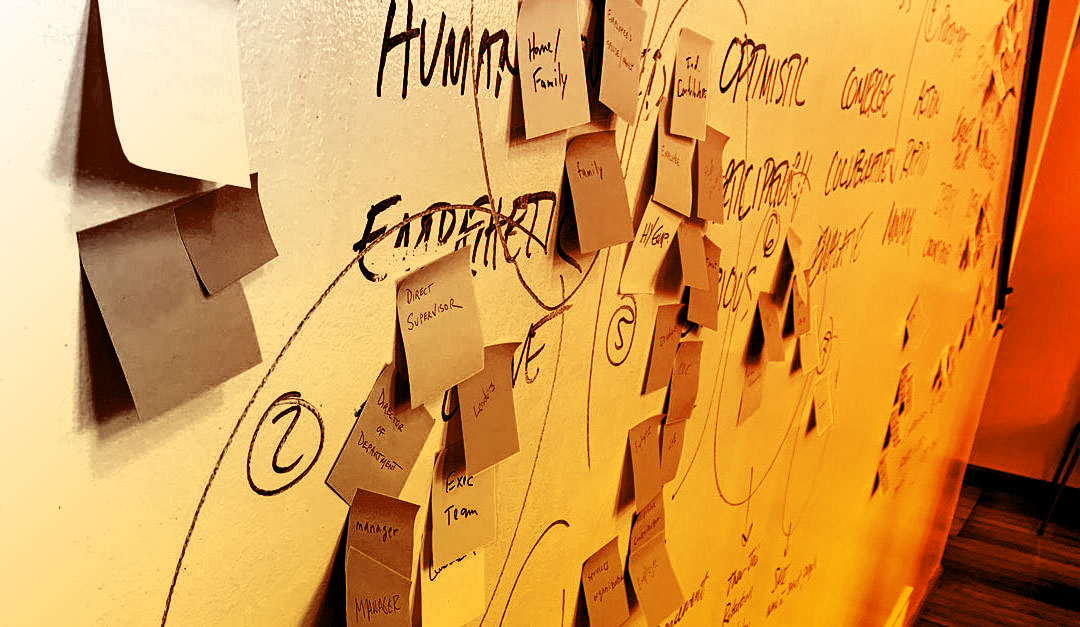What is Design Thinking?
Design thinking is not so much “a thing”, but more so “a way”. Below are sourced excerpts that explain design thinking in more detail and provide links to original articles.
“Design thinking is an innovative problem-solving process rooted in a set of skills.The approach has been around for decades, but it only started gaining traction outside of the design community after a 2008 Harvard Business Review article titled Design Thinking by Tim Brown, CEO and president of design company IDEO.
Since then, the design thinking process has been applied to developing new products and services, and to a whole range of problems, from creating a business model for selling solar panels in Africa to the operation of Airbnb. At a high level, the steps involved in the design thinking process are simple: first, fully understand the problem; second, explore a wide range of possible solutions; third, iterate extensively through prototyping and testing; and finally, implement through the customary deployment mechanisms.
The skills associated with these steps help people apply creativity to effectively solve real-world problems better than they otherwise would. They can be readily learned, but take effort. For instance, when trying to understand a problem, setting aside your own preconceptions is vital, but it’s hard.
Creative brainstorming is necessary for developing possible solutions, but many people don’t do it particularly well. And throughout the process it is critical to engage in modeling, analysis, prototyping, and testing, and to really learn from these many iterations.
Once you master the skills central to the design thinking approach, they can be applied to solve problems in daily life and any industry.”
Source: (mitsloan.mit.edu)
Design thinking helps us tackle wicked problems
“The uniqueness of design thinking lies in the kinds of problems it addresses. When it comes to the problems to be solved with design thinking, we’re not just talking about ordinary, common problems that have tried-and-tested solutions. We’re talking about highly complex, wicked problems: the kind that refuse to be solved using standard methods and approaches.
Not only are these problems difficult to define, but any attempt to solve them is likely to give way to even more problems. Wicked problems are everywhere, ranging from global issues such as climate change and poverty, to challenges that affect almost all businesses such as change management, achieving sustainable growth, or maintaining your competitive edge.
Design thinking is an actionable approach which can be used to tackle the world’s wickedest of problems. It fosters user-centricity, creativity, innovation, and out-of-the-box thinking.”
Source: (invisionapp.com)
The Challenges of Innovation
“To be successful, an innovation process must deliver three things: superior solutions, lower risks and costs of change, and employee buy-in. Over the years businesspeople have developed useful tactics for achieving those outcomes. But when trying to apply them, organizations frequently encounter new obstacles and trade-offs.
Defining problems in obvious, conventional ways, not surprisingly, often leads to obvious, conventional solutions. Asking a more interesting question can help teams discover more-original ideas. The risk is that some teams may get indefinitely hung up exploring a problem, while action-oriented managers may be too impatient to take the time to figure out what question they should be asking.
It’s also widely accepted that solutions are much better when they incorporate user-driven criteria. Market research can help companies understand those criteria, but the hurdle here is that it’s hard for customers to know they want something that doesn’t yet exist.
Finally, bringing diverse voices into the process is also known to improve solutions. This can be difficult to manage, however, if conversations among people with opposing views deteriorate into divisive debates.
Along the way, design-thinking processes counteract human biases that thwart creativity while addressing the challenges typically faced in reaching superior solutions, lowered costs and risks, and employee buy-in. Recognizing organizations as collections of human beings who are motivated by varying perspectives and emotions, design thinking emphasizes engagement, dialogue, and learning. By involving customers and other stakeholders in the definition of the problem and the development of solutions, design thinking garners a broad commitment to change. And by supplying a structure to the innovation process, design thinking helps innovators collaborate and agree on what is essential to the outcome at every phase. It does this not only by overcoming workplace politics but by shaping the experiences of the innovators, and of their key stakeholders and implementers, at every step. That is social technology at work.”
Source: (hbr.org)

